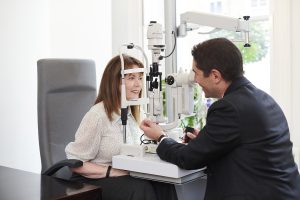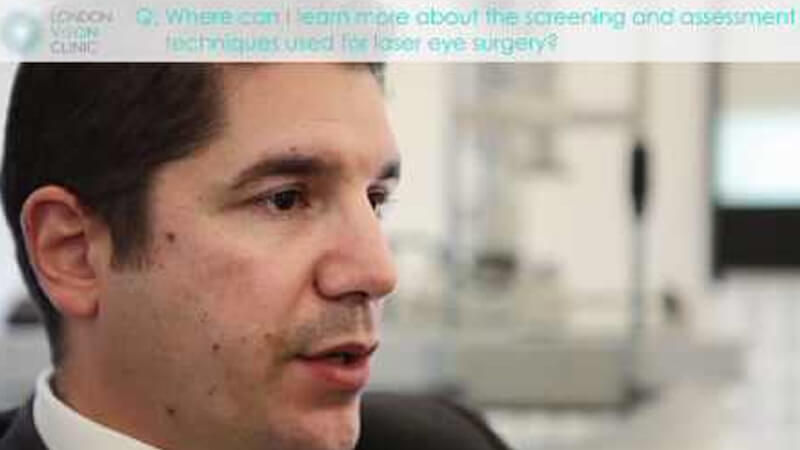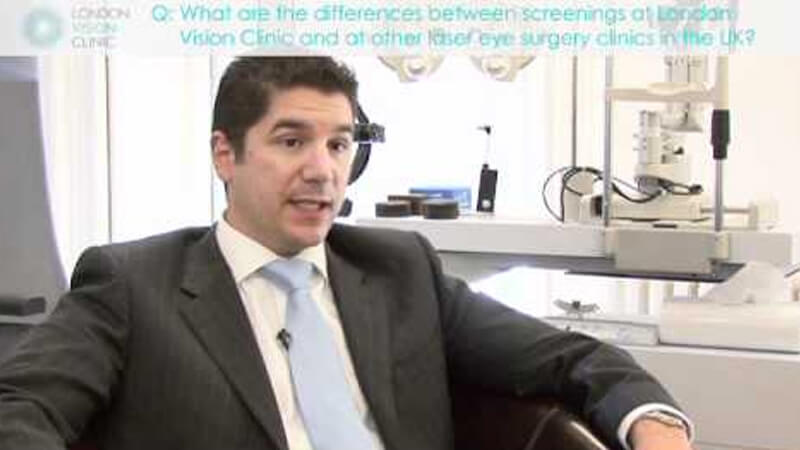The Importance of a Rigorous Screening Program

Laser Eye Surgery deals with one of our most complex organs and most precious senses. As such, it is essential that the utmost care and attention are paid throughout the whole process – not just on the day of surgery. That’s why we employ one of the most rigorous and comprehensive initial screening programs around.
In this article, we’ll explain why – when it comes to Laser Eye Surgery – more is more. Understand the importance of the initial screening process and what makes us different to other clinics at this crucial stage in your journey to clearer vision.
The First Step on Your Laser Eye Surgery Journey
Laser Eye Surgery is a semi-automated procedure that uses cutting-edge technology – oh, and it can be performed in just a few minutes! For these reasons, it’s easy to assume that little preparation is needed for your treatment.
But, while some clinics may be more than happy to offer you a consultation (and maybe even treatment) on your lunch break, at London Vision Clinics, we realise that Laser Eye Surgery is not a one-off procedure but a multi-stage process. A process that starts with a comprehensive consultation and screening and continues right through to your one-year aftercare check-up.
We know that giving you the best outcome starts with taking the right measurements and readings at your initial consultation and screening appointment. It is this data that allows us to create a thoroughly personalised treatment plan for each and every one of our patients.
The last thing you want when placing your vision in the care of a Laser Eye Surgery clinic is a rushed consultation that collects only the most basic data necessary. This may be quick and convenient, but this should never be the most important consideration when it comes to something important as your vision.
At London Vision Clinic, our initial screening program usually takes between 2 and 3 hours to complete. But what exactly takes this long?
Measuring your eyes with superior accuracy
Our clinical staff make use of five technologies to measure your eyes as accurately as possible. These are:
- Topography: A type of scan that measures the curvature and elevation of your cornea. Topography is one of the most important factors when determining your suitability for Laser Eye Surgery. At London Vision Clinic, we use not one but three different devices to measure the topography of your eyes, including the Zeiss Atlas 9000, Oculus Pentacam, and CSO MS-39.
- Pachymetry: A pachymeter measures the depth of the thinnest part of your cornea. These measurements are used to create a 3D map of your cornea – again essential for determining your suitability for treatment.
- Artemis Insight 100: The Artemis Insight 100 is today the most accurate corneal scanner in the world. It allows us to display a superior profile of your cornea, including the different layers of the cornea.
- Pupillometry: The measure of the size and reactivity of the pupil, pupillometry helps to ensure that treatment will be effective across the full range of lighting conditions. We go one step further than many clinics and use Procyon infrared pupillometry to measure your eyes in complete darkness, allowing us to minimise the chances of side effects like halos and starbursts.
- Wavefront Analysis: Measures the unique imperfections on the surface of your eye (called higher-order aberrations). These measurements are fed into the laser to help us achieve better results. At London Vision Clinic, we use the Carl Zeiss WASCA wavefront aberrometer, which has the highest resolution on the market, as well as the Sonogage II (50MHz) hand-held probe and Orbscan II.
In the video below, Dr Glenn Carp invites you to learn more about the screening and assessment technologies used for Laser Eye Surgery at the London Vision Clinic.

Find out more about World-Class Laser Eye Surgery technology at London Vision Clinic.
Other tests and assessments at your initial screening
The tests listed above help to give us a pretty good idea of not only your suitability for Laser Eye Surgery but also the best treatment plan for you – including whether you would benefit from wavefront-guided Laser treatment. But we don’t stop there.
Measuring Intraocular Pressure
We use Ocular Response Analysis and Tonometry. The Ocular Response Analyser utilizes a rapid air impulse and an advanced electro-optical system to record two applanation pressure measurements: one while the cornea is moving inward, and the other as the cornea returns.
PRESBYOND® Laser Blended Vision
If you are over 40, our optometrist will perform a PRESBYOND® Laser Blended Vision simulation in order to provide you with this option as a potential treatment plan.
Other tests include:
- Contrast Sensitivity testing
- Night Vision simulation
- Ocular Dominance and Tolerance Assessment
- Very-high frequency (VHF) Ultrasound
- The Schirmer test (Dry eye exam)
- Slit-lamp examination
Laser Eye Surgery may only take a few minutes to perform, but its effects will be with you for the rest of your life. For such a life-changing procedure, we believe that the least we can do is ensure both you and your surgeon are as prepared as possible when heading into surgery. That’s got to be worth a few hours, right?
As Dr Glenn Carp explains, At London Vision Clinic, we provide the most extensive free screening available.

If you have any questions about your initial consultation, get in touch with one of our friendly clinic coordinators today. Alternatively, Book a Consultation to kickstart your journey to better vision.


